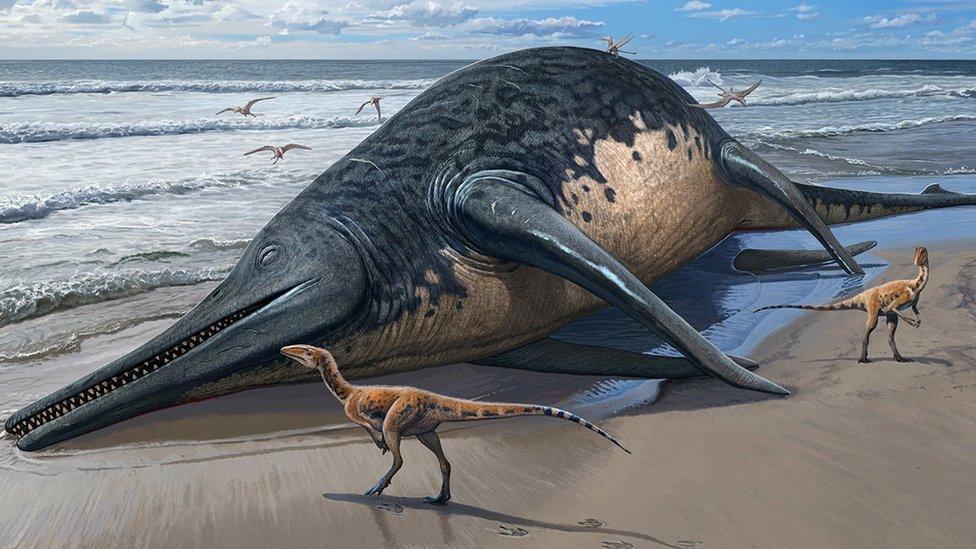This mammal lived alongside dinosaurs in the swamp
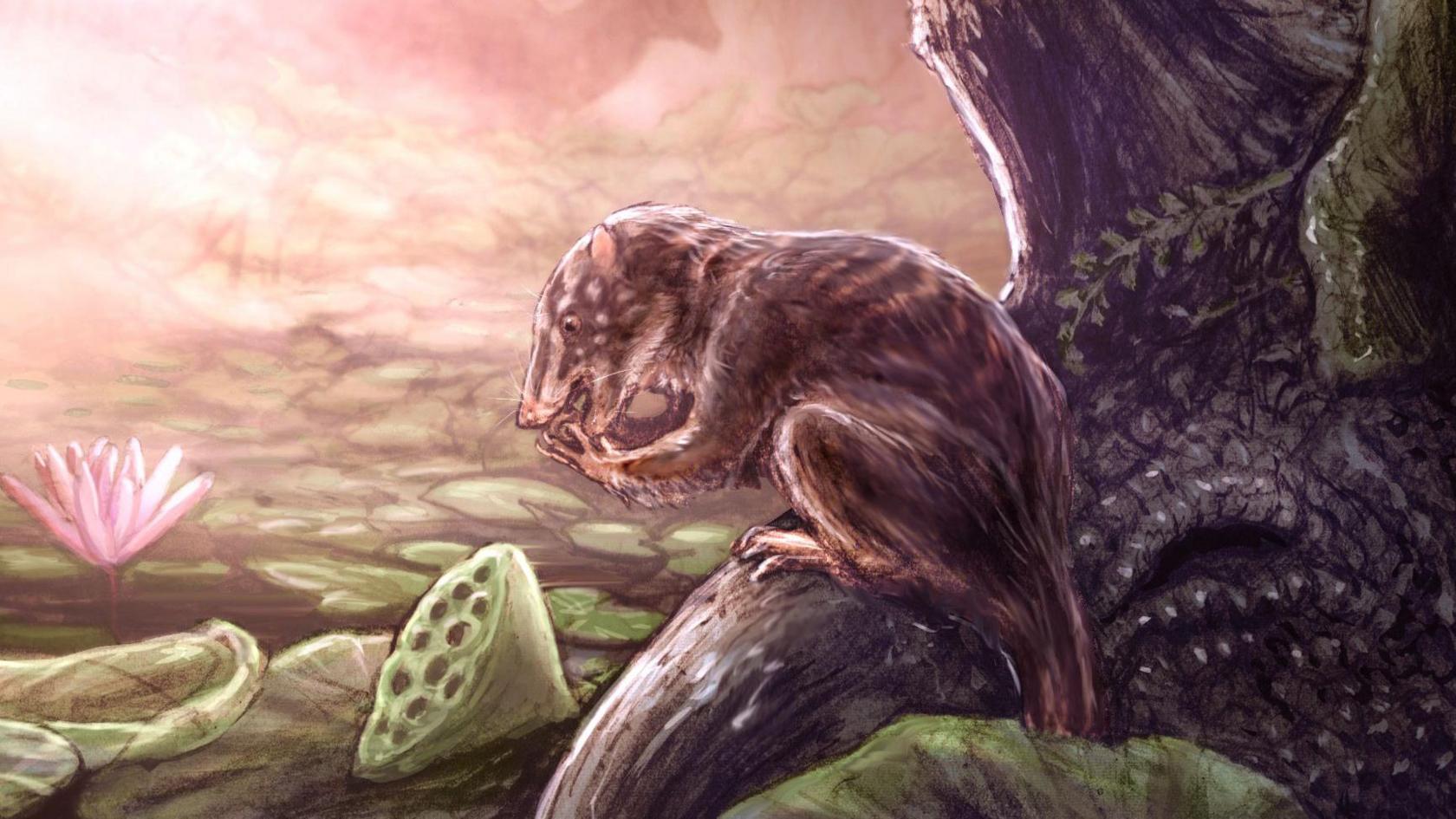
The Heleocola is thought to have lived in the wet forests next to a river around 70 million years ago
- Published
When we think back to prehistoric times, we might think about dinosaurs but early mammals are thought to have evolved more than 200 million years ago, with more modern groups appearing around 60 million years ago.
Most mammals during the age of the dinosaurs were small, up to the size of a chipmunk.
A new discovery by palaeontologists has found a bigger swamp-dwelling mammal that lived around 70 million years ago on the border of Colorado and Utah in the US called Heleocola picaenus.
More on prehistoric mammals
- Published26 July 2024
- Published30 June 2023
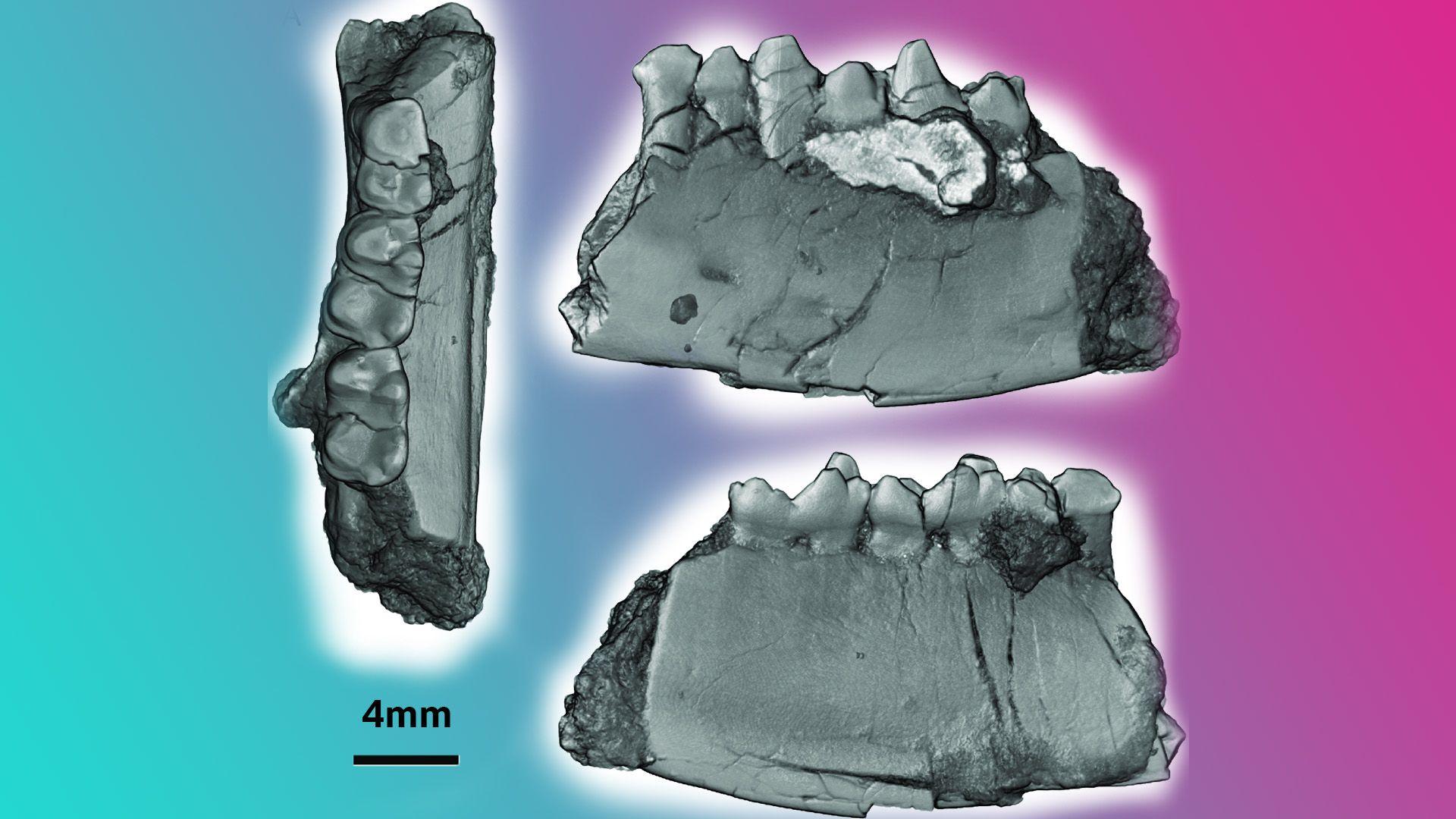
These bone fragments were what helped palaeontologists make the new discovery
Scientists from Universities including the University of Colorado studied a collection of fossil teeth and a jaw collected in 2016.
The jaw fragment had three molars which were nearly five times bigger than typical mammal teeth found in the same area, making the Heleocola piceanus about the same size as a modern-day muskrat.
It's not the largest mammal known from this period but it has still got scientists excited.
John Foster from the Utah Field House of Natural History State Park Museum was the study's co-author. He said: “The jaw, the teeth, everything was so much bigger than most mammal fossils you see out of the Cretaceous rocks around there. I thought that’s huge!”
More like this
- Published4 August 2023
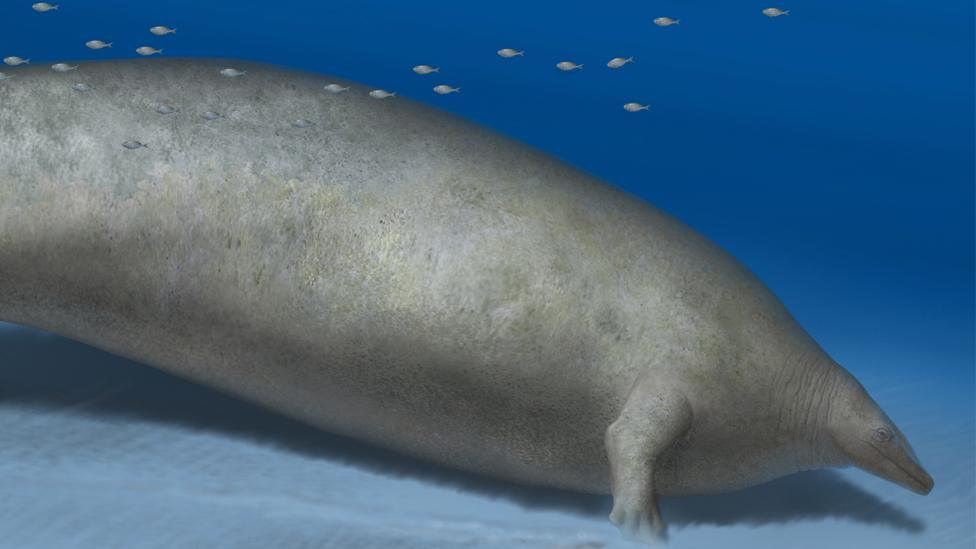
- Published17 April 2024
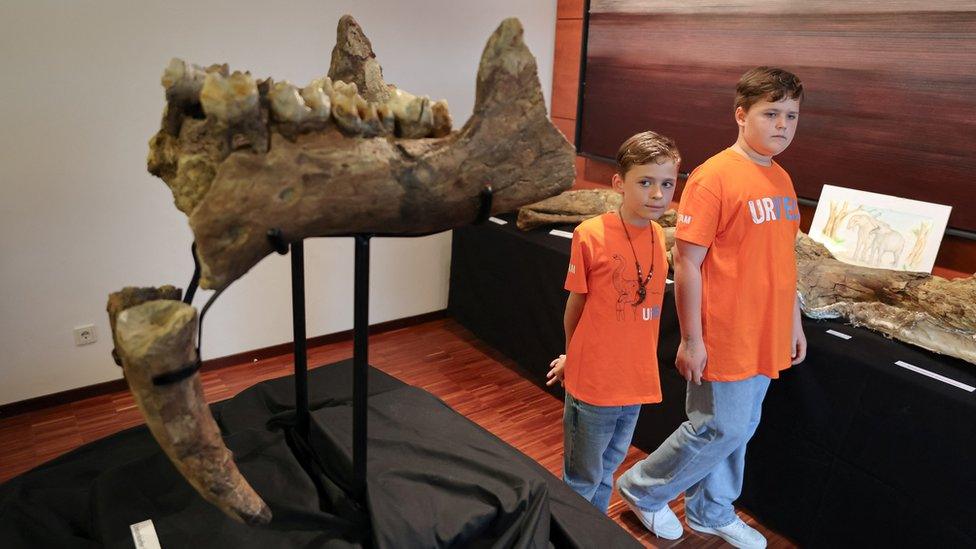
- Published18 April 2024
